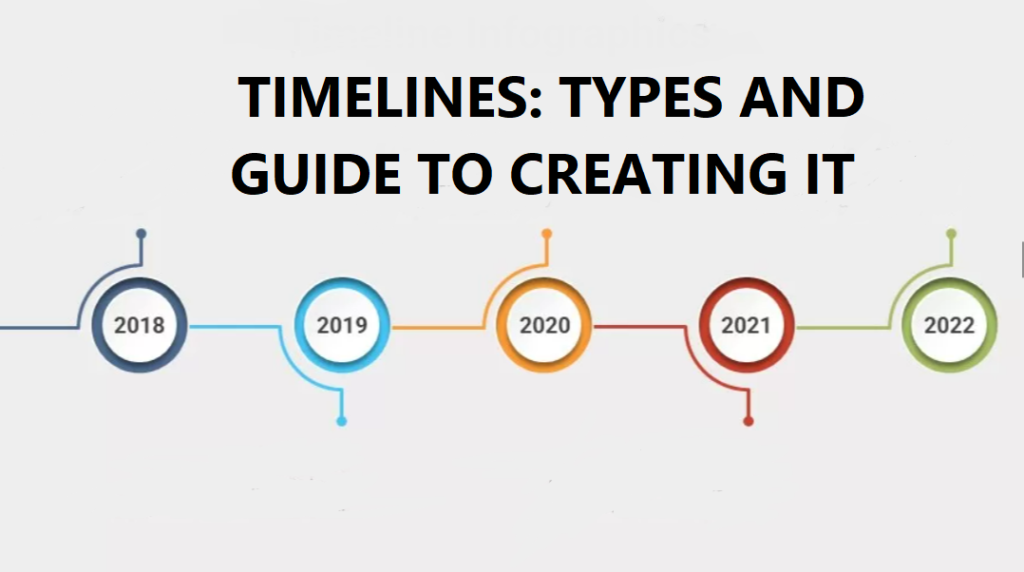Timelines aid in the visual portrayal of historical periods and the organisation of huge undertakings or events. These tools summarise major events or activities and demonstrate how they relate to others. Knowing the many sorts of timelines might assist you in selecting one for your business or event.
This article defines a timetable and provides a list of different timelines for various sorts of projects.
What is a timeline
A timeline is a graphic tool that depicts the sequence of events that occurred during a certain time period. These are used by project teams to plan, organise, and monitor the progress of their activities. This application also aids in the tracking of various occurrences in a visually represented process. It can assist children learn crucial dates and businesses maintain track of their project plans.
Because significant information is all given out in one place, timelines assist individuals in identifying patterns and schemes in a streamlined style. A timeline’s components include a line with numerous tick marks to depict a time period and the year either above or beneath the tick mark.
You can create your own timeline for your projects or have the option to download them online. The templates can be easily edited to your needs and will save your time. Check out these infographic timeline slides.
Types of timeline
Horizontal timeline
A horizontal timeline, which tracks events from left to right, is one of the most frequent types of timelines. Typically, these display information in chronological order, with the oldest occurrence on the left and the most recent on the right. One type of horizontal timeline is the chronological timeline.
1) Vertical timeline
Vertical timelines follow data from bottom to top. This type of timeline can be used to track time and numbers, such as money raised for an organization’s fundraiser. These often begin at the bottom and go upward to demonstrate development or growth toward a goal. The upward movement represents an organization’s gains or losses visually.
2) Roadmap timeline
Roadmap diagrams depict a company’s business life cycle and the processes required to achieve a specific goal. Roadmaps are used by businesses to track their progress in marketing strategy, product development, and business sales. They also use them to explain how long a project is expected to take and when it will be completed. This timeline can take several forms, typically looping around corners and having a beginning and an end point.
3) Gantt Chart
Gantt chart timelines organise project components such as the project schedule, workflow, and status report using a spreadsheet-like framework. The Gantt chart, like a bar graph, has an X-axis and a Y-axis. The X-axis shows the task duration, while the Y-axis represents the task.
4) Project timeline
A project timeline outlines the various stages of a project to keep team members on track. This timeline is focused on the future, setting deadlines for others to meet. These are used by project managers to visualise their operations. Project timelines list tasks in chronological sequence so that team members know what must be done and may plan ahead of time.
Advantages of timelines
Better Communication
According to a Cortex study, 57% of initiatives fail owing to insufficient communication among team members. This demonstrates the importance of incorporating a communication strategy into project management, which can be simply specified using timeframes.
Project progress
Assume you are running behind schedule on a project. While this is unfortunate, the benefit of a project management schedule is that you can identify when you’ve missed a deadline as soon as feasible. This also implies that you can react as rapidly as feasible.
Improved time management
Time is crucial to the success of any undertaking. When you plan your project using a timeline, you can see how harmful a delay might be. It’s simpler to resist working mindlessly on chores when you have an overall perspective of the progress in front of you. Instead, your team will concentrate on what needs to be done each week.
Increased motivation
A project’s motivation might be the driving force behind it. Some team members find it easier to stay motivated when they can see a timetable ahead of them since it helps to focus and discipline them. When people perceive that they are finishing their chores on schedule, their motivation increases (or even ahead of time).
Conclusion
Now that you’ve learned how to make a project timetable, it’s time to get started. The value of deadlines in project management cannot be overstated; use the step-by-step instructions in this article to create more efficient, productive, and ultimately successful projects in the future.





